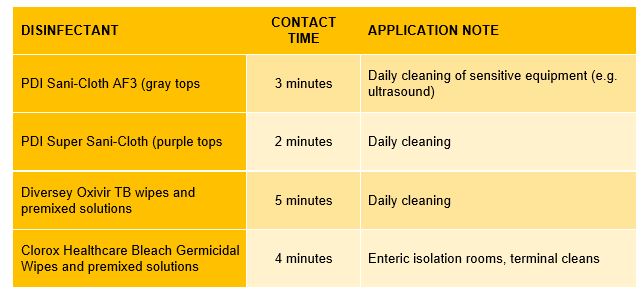Share:
Promote safety, keep Asante clean
While it seems like common sense, it’s worth stating the critical importance of keeping our health care facilities clean. Methodical, routine cleaning and disinfection keeps germs away from people and prevents them from spreading.
Patients who seek care, especially at our hospitals, are often sick and have compromised immune defenses. As a result, our patients can be more vulnerable to infections compared with someone who’s healthy and living at home.
Environmental cleaning is fundamental to preventing infection from contaminants caused by germs from hands, droplets from coughing, sneezing or splashes. Cleaning and disinfection procedures must be applied regularly, consistently and correctly to prevent the accumulation of soil, dust and debris that can harbor and support the growth of microorganisms.
High-touch surfaces such as bedside tables, IV poles and handheld devices should be cleaned throughout the day with a hospital-approved disinfectant. Similarly, all items should be cleaned and disinfected after each patient’s use.
These items should also be visually inspected before placing into clean supply or designated areas for next patient use. This list of hospital approved disinfectants is available in Environmental Cleaning and Disinfection policy 400-IC-IC-0632![]() or see the table below.
or see the table below.

Staff should follow manufacturer’s instructions for use (IFU) to clean and disinfect items. The IFU can be obtained from the manufacturer or product vendor. This information guides appropriate cleaning and disinfection of the item for both adequate killing of germs and preserving the integrity of the item itself.
When disinfecting surfaces, staff should ensure adequate contact or dwell times, which is the amount of time a surface needs to remain wet to kill germs. The contact time is typically indicated on the disinfectant itself and is often a few minutes.
Surfaces must be intact (not cracked or peeling) and made of a cleanable nonporous material to hold up to hospital-approved disinfectants. Damaged surfaces should be reported to supervisor for removal and repair or replacement.
Supplies and surfaces need to be protected from sources of contamination. Clean supplies should be stored in controlled, designated areas and separately from dirty or contaminated items. Linens must be continuously covered on designated storage shelves or transport carts. Clean items should be stored away from splashes and water contamination.
Resources (log into the Asante network to access)
Environmental Cleaning and Disinfection 400-IC-IC-0632
Clean Environment Fast Facts 400-INF-0059
Standard Precautions and Environmental Guidelines 400-IC-IC-0109
Facility Environmental Cleaning and Disinfection 400-EVS-EVS-0001
If you have a question, please contact the author or relevant department directly.



